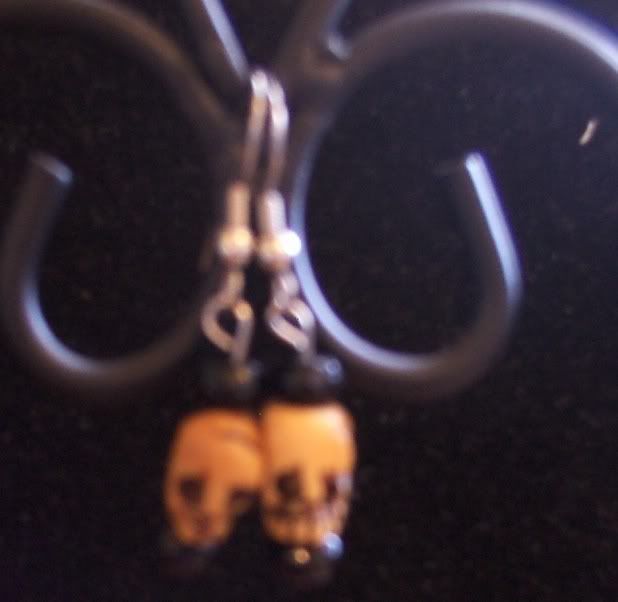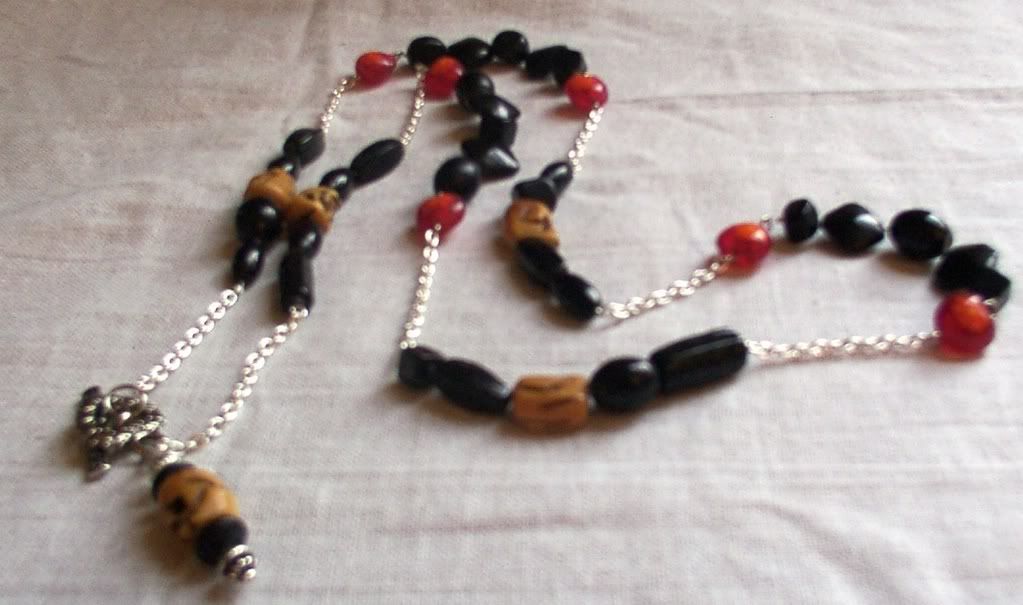SKULLS
The skull, an obvious symbol of death, has been given strong religious connotations in several cultures. Among the people of India and neighboring regions, the skull necklace is an iconographic memento mori worn by certain gods and goddesses, most notably Siva in his ascetic form and Kali in her wrathful form. Skull necklaces are also worn by the wrathful aspects of allied Tibetan and Nepalese deities such as Kurukulla -- and necklaces and prayer beads carved from animal or human bones in the form of skulls are popular with their devotees.
In pre-Columbian America, the skull was given an honoured place in the religious iconography of the Aztecs and related tribes of Mexico. Their descendents, both Indians and people of mixed European and Native American heritage, continue to venerate the skull and the skeleton during the national Day of the Dead ceremonies, when skulls made of sugar are eaten and offerings are placed on the graves of deceased relatives and friends.
In Nepal, the use of skull-beads on mallas (prayer beads, sometimes called "rosaries" by Americans) continues to this day. A malla, handcarved from yak bone and made with 108 beads, can be used in devotions - but when worn as jewelry, Nepalese mallas have also become popular among Americans who worship the goddess Kali or the god Siva or who affect Gothic or "dark" apparel.
You can find this jewelry on my Etsy store now. www.bbbellezza.etsy.com It is made with handcarved Yak bone skull beads described above. It is creepy and very cool. You can contact me to see if they are available for purchase still. I have a lot of the earrings available.
Earrings $5.00

Bracelet $15.00


Among many Europeans and North Americans of European descent, the skull now has less of a religious meaning than it does a "spooky" one. The frightening old European skull-and-crossbones -- used as a memento mori in European-style Freemasonry, and as the "Jolly Roger" flag of priates -- has been tamed over the centuries. These days the skull is trotted out for display at Halloween -- along with jack-o-lantern pumpkins and black cats -- as a conventional symbol of mild and amusing fright.
Still, the age-old links between religion, protection, and luck are so strong that in some North American "outlaw" sub-cultures, the skull retains its former status as a memento mori and magical protection charm. Bikers and low-riders, as well as some members of the military, utilize the skull as a significator of reckless machismo barely protected from diaster or doomed bravery that accepts its fate.
Another North American Subculture - that of hard-core gamblers - has also adopted the "reverse bad luck" of the skull for iconographic purposes. In the context of the sporting life, the skull, along with dice rolling sevens and black cats, symbolizes luck in adversity.

No comments:
Post a Comment